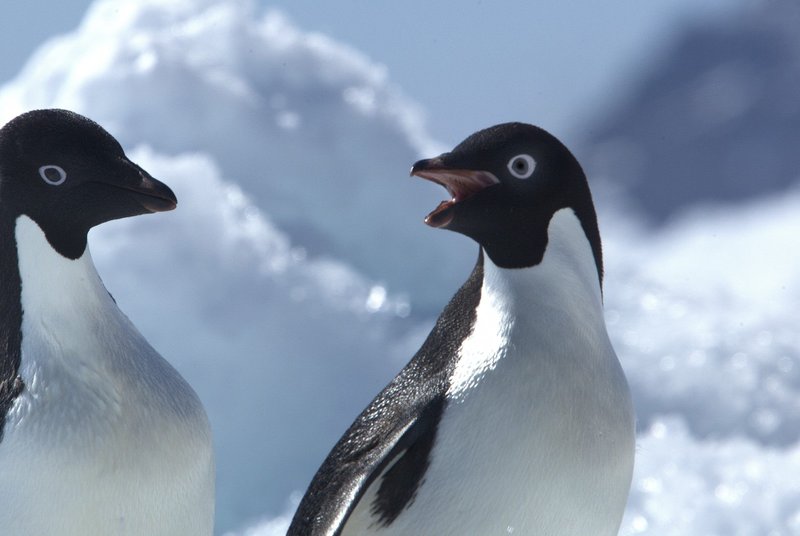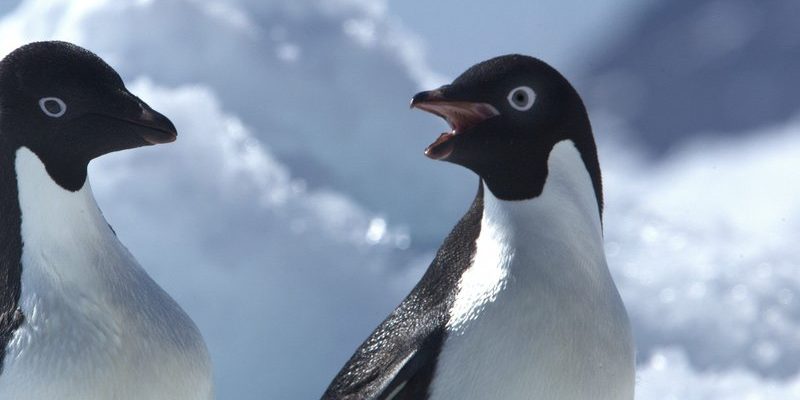
When you think of penguins, the image that might pop into your head is of those adorable, waddling birds dressed in tuxedos, right? Among these fascinating creatures, the Adelie Penguin stands out with its unique characteristics and charming personality. These little birds, native to the icy landscapes of Antarctica, are not just another pretty face; they have a rich story to tell about survival, adaptability, and life in one of the harshest environments on Earth.
As we dive into the captivating world of the Adelie Penguin, you’ll discover everything from where they live and what they eat to their social behaviors and breeding habits. Think of it like uncovering the layers of an onion—each detail revealing something new and exciting about this remarkable species. So, grab a warm drink, and let’s embark on this chilly adventure together!
Physical Characteristics
The Adelie Penguin is often recognized by its striking appearance. These birds are relatively small compared to some of their larger penguin cousins, reaching heights of about 28 to 30 inches and weighing between 6.5 to 12 pounds. Their most notable features include a classic black back that contrasts sharply with their white bellies, making them look quite dapper indeed. But it’s their bright white eye rings that truly make them stand out—like tiny, cheerful spectacles perched on their faces. This unique marking helps them stand out against the stark backdrop of their icy habitats.
In terms of habitat, the Adelie Penguin’s feathers are specially designed for insulation. They have a layer of blubber and dense feathers that keep them warm in freezing temperatures. During the breeding season, which often coincides with the Antarctic summer, you can see them sporting a bit of fluff as their chicks hatch. That fluff is vital—newly hatched chicks are covered in down feathers that require constant warmth from their parents!
One more captivating aspect of their physical traits is their flippers. These aren’t just for show! The flippers allow them to swim with remarkable agility. In fact, an Adelie Penguin can reach speeds of up to 15 miles per hour when swimming. So when you picture them waddling on land, just imagine how graceful they become in the water, zipping around like little torpedoes!
Habitat and Distribution
The Adelie Penguin is primarily found along the coasts of the Antarctic continent and on specific islands of the Southern Ocean. Think of this area as their exclusive club—an ice-covered arena where they thrive. Their breeding colonies are often located on rocky beaches and, interestingly, they also prefer areas that are free from snow cover. These locations provide the perfect spots to build their nests, often made of pebbles that they collect from their surroundings, adding a touch of creativity to their living spaces.
During the harsh winter months, some populations may migrate northward to ice-free areas, while others stick around the coast of Antarctica. This ability to adapt to their surroundings showcases their resilience. It’s like they’ve mastered the art of living in one of the planet’s most uncompromising environments. They face fierce winds, blizzards, and extremely low temperatures, and yet they thrive. Isn’t that incredible?
The Adelie Penguin’s distribution is crucial for its survival. As climate change affects ice patterns and availability, these birds are forced to adjust their nesting and feeding strategies. This connection between their habitat and their well-being speaks volumes about the importance of preserving their icy homes. If we don’t take care of their environment, we risk losing not just the Adelie Penguins but a whole ecosystem that depends on their presence.
Diet and Feeding Habits
If there’s one thing you should know about the Adelie Penguin, it’s that they are opportunistic feeders. Their diet mainly consists of krill, small shrimp-like crustaceans, which are abundant in their icy waters. Imagine them diving into the sea, hunting these little critters with finesse. They can hold their breath for quite a while—up to 3 minutes—while diving to depths of about 180 meters in search of food. This hunting technique is not just a skill; it’s essential for their survival and that of their chicks.
In addition to krill, Adelie Penguins also enjoy eating fish and squid when available. This variety in their diet is a smart way to adapt to changing food sources. When krill populations fluctuate, they’re quick to switch it up. It’s like having a backup plan—one that’s essential when you’re living in such unpredictable conditions!
The way these penguins feed is fascinating. They often dive in groups, which not only makes hunting more efficient but also provides safety in numbers. Think of it as a team effort, all in pursuit of that delicious krill buffet. After feeding, they return to their breeding colonies, and you can imagine the joyful reunion as they regurgitate food to feed their chicks. It’s like a family meal that’s lovingly prepared!
Breeding and Nesting Behaviors
The breeding life of the Adelie Penguin is as charming as it is complex. These birds typically return to their nesting colonies around the same time each year, often late October or early November. Upon arrival, male Adelie Penguins will engage in a little courtship dance, puffing up their chests and calling out to attract females. It’s like a dance-off to win the heart of a mate, and the winner ultimately gets to share the joys of parenthood.
Once paired, they will work together to build their nests, which are generally made from pebbles. The unique thing here is that these pebbles can sometimes be quite competitive—the more pebbles a penguin collects, the better their nest looks! This “rock collection” can lead to some playful squabbles among neighboring penguins, turning their nesting ground into a lively marketplace of pebbles.
After laying their eggs—usually two—both parents share the responsibility of incubation, which lasts around 35 days. During this time, they take turns keeping the eggs warm, showcasing their teamwork. Once the fuzzy chicks finally hatch, the parents continue to co-parent, ensuring the little ones get enough food and warmth. Watching them care for their young is like witnessing a heartwarming family dynamic unfold in the icy wilderness.
Conservation Status
The Adelie Penguin currently holds a status of “Least Concern” according to the IUCN Red List, which is encouraging. However, don’t let that fool you into thinking they’re free from threats. These adorable birds are facing challenges primarily due to climate change. The melting ice caps and shifts in ocean temperatures can impact their food supply and breeding grounds. This is where things get serious—if we don’t act to address these environmental issues, we risk the well-being of these remarkable creatures.
Additionally, changes in ocean currents can affect the availability of krill, which is vital for their diet. Human activities, such as overfishing and pollution, further exacerbate these challenges. It’s a tangled web where every action has a reaction, and it’s essential for us to understand our role in protecting these birds and their habitat.
Conservation efforts are underway, with various organizations working tirelessly to raise awareness and protect the penguins’ environment. It’s heartening to see communities come together to safeguard these birds for future generations. After all, we share this planet, and the preservation of the Adelie Penguin can be a reflection of our commitment to a balanced ecosystem.
Fun Facts
- Adelie Penguins are known for their “tobogganing” technique, where they slide down icy slopes on their bellies!
- These penguins are named after the Adelie Land region of Antarctica, which was named by French explorer Jules Dumont d’Urville after his wife.
- Unlike some other penguin species, Adelie Penguins do not have a mating bond that lasts beyond the breeding season.
- They can live up to 20 years in the wild, although many face threats that can shorten their lifespan.
- The Adelie Penguin is one of the most studied penguin species, providing valuable insights into climate change and ecosystem health.
FAQ
What do Adelie Penguins look like?
Adelie Penguins have a distinctive appearance with a black back and white belly. They sport bright white eye rings that give them a cheerful look. They are small compared to other penguin species, typically standing about 28 to 30 inches tall. Their sleek, streamlined bodies make them excellent swimmers.
Where do Adelie Penguins live?
Adelie Penguins are primarily found on the coasts of Antarctica and surrounding islands. They prefer rocky shores that are free from snow for building their nests. During winter, some may migrate to ice-free areas, while others remain along the icy coast.
What do Adelie Penguins eat?
Their diet mainly consists of krill, small crustaceans abundant in Antarctic waters. They also eat fish and squid when these are available. Their foraging habits are vital for their survival, especially during breeding seasons when they need to feed their chicks.
How do Adelie Penguins breed?
Adelie Penguins typically breed once a year, returning to the same nesting sites they used previously. After a courtship display, pairs build nests from pebbles. They usually lay two eggs and share incubation duties for about 35 days until the chicks hatch.
How fast can Adelie Penguins swim?
Adelie Penguins are quite adept in the water and can swim at speeds of up to 15 miles per hour. Their flippers are well-adapted for maneuvering through the icy waters, making them agile hunters while chasing after prey.
What are the main threats to Adelie Penguins?
The most significant threats to Adelie Penguins are climate change and its resulting effects on their habitat. Melting ice caps and changing ocean temperatures impact their food sources and breeding grounds. Additionally, human activities such as overfishing and pollution put added pressure on their populations.
How long do Adelie Penguins live?
Adelie Penguins can live for about 15 to 20 years in the wild, although many face challenges that can affect their lifespan. Their survival often depends on environmental conditions and availability of food.
Why are Adelie Penguins important to their ecosystem?
As a key predator in the Antarctic ecosystem, Adelie Penguins play a vital role in maintaining the balance of their environment. Their presence helps regulate krill populations, which are crucial in the marine food web. Protecting them contributes to the overall health of the Antarctic ecosystem.
How can we help protect Adelie Penguins?
Supporting conservation initiatives, reducing carbon footprints, and advocating for policies that protect marine environments can all contribute to the survival of Adelie Penguins. Awareness and education about the impacts of climate change are crucial for ongoing efforts to preserve their habitats.

